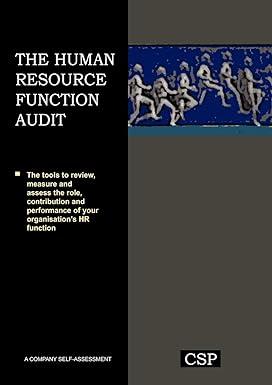Question
Zerion Motors Corporation manufactures and sells luxury hybrid automobiles. Zerion had the following transactions during the year 2016. Their fiscal year ends on December 31,
Zerion Motors Corporation manufactures and sells luxury hybrid automobiles. Zerion had the following transactions during the year 2016. Their fiscal year ends on December 31, 2016.
1. While some of their vehicles are available for immediate sale, Zerions highest-end model, the Phalon, is only available by special order. Customers who want to purchase a Phalon must pay a 25% deposit in advance, with the balance due upon delivery of the vehicle. Any customer who pays a deposit and later cancels their order forfeits all but 5% of the deposit (so they pay 20% of the cost of the car). All special orders are fulfilled within 12 months of the original order date and any deposits due are returned within three months of the order cancellation date.
There are three trims on the Phalon the Phalon X, which sells for $95,000, the Phalon Z, which sells for $110,000 and the Phalon XZ, which sells for $150,000.
During the year 2016, Zerion had the following special order transactions for their Phalon model:
Trim Level #Ordered #Delivered #Canceled #DepositsReturned (5% cost)
X 42 21 3 2
Z 33 12 2 1
XZ 12 8 1 0
2. Zerion sells a specialty smart plug that can be used to increase the fuel efficiency of their cars. The plug is compatible with all of their car models and sells for $500 per unit. The plug comes with a one-year warranty that covers full replacement. Based on past experience, Zerion estimates the warranty expense for the plug to be 2% of sales (of the plug). The balance in Zerions warranty liability account for these smart plugs was $135,500 on January 1, 2016. Sales of the smart plug were $2,275,000 in 2016. Zerion paid $34,125 in warranty costs for the plugs during 2016.
3. On December 9, Zerion declared $100,000 of cash dividends and 50,000 shares of $5 par value ($20 market value) stock dividends to shareholders of record as of December 23. The dividends were to be paid and distributed on January 13, 2017.
4. During the last quarter of 2016, Zerion had sales of $342,100,000. Of this amount 40% were credit sales. Based on past history, Zerion estimates that 3% of this amount will be uncollectible.
5. Zerion recently expanded into a larger storeroom. The cost of the new building was $7,500,000 and Zerion obtained a $3,000,000, 30-year mortgage to help pay for the new building. (Disregard interest and assume that the mortgage principal is repaid evenly over the 30-year period.)
6. On August 1, Zerion issued a nine-month, $500,000, 6% note. The principal and interest on the note will be paid at maturity.
7. Zerion had two other outstanding notes payable. The first note was for $2,000,000 and matured on February 22, 2017. The second note was for $3,000,000 and matured on February 15, 2017. On February 17, Zerion issued 100,000 shares of their $20 market value ($5 par value) stock and used the proceeds to satisfy the $2,000,000 note that was due on February 22, 2017. On February 8, 2017, they paid off the $3,000,000 note that was due on February 15, 2017 and then they obtained a new loan for $3,000,000 to replace the funds that were used to pay off the original loan.
8. Zerion collects 6 percent sales tax from customers for all sales and remits each months collections to the state on the 15th of the month following the sale. December sales totaled $130,560,200, including sales tax for the month.
9. In December, 2016, Zerion ran a promotion offering a free, engraved keychain to anybody who purchased a car during the month. The offer is good for 12 months after the date of purchase. The keychains cost Zerion $10 each and engraving costs an additional $5 per unit. Zerion estimates that 30% of the customers will redeem the offer. Zerion sold 2,180 cars during the month of December and 205 customers had redeemed the offer as of December 31, 2016.
10. Zerion issued $5,000,000 of 6% bonds at par (meaning they sold for face value) on July 1, 2012. The bonds mature on July 1, 2022, but bondholders have the option of calling the bonds on July 1, 2017. It is not expected that the bondholders will call the bonds in the coming year.
Required:
For each scenario above, Determine what amount, if any, should be reported as a CURRENT LIABILITY. Please show your calculations and the final amount for each situation under EACH scenario. Do not prepare an aggregated Current Liabilities section of the balance sheet, and journal entries are not necessary. For scenarios that do not have current liabilities, Explain How The Amount Should Be Reported.
Step by Step Solution
There are 3 Steps involved in it
Step: 1

Get Instant Access to Expert-Tailored Solutions
See step-by-step solutions with expert insights and AI powered tools for academic success
Step: 2

Step: 3

Ace Your Homework with AI
Get the answers you need in no time with our AI-driven, step-by-step assistance
Get Started


